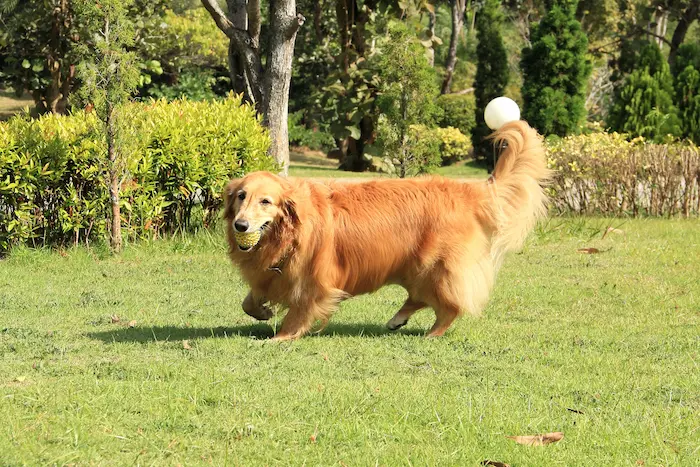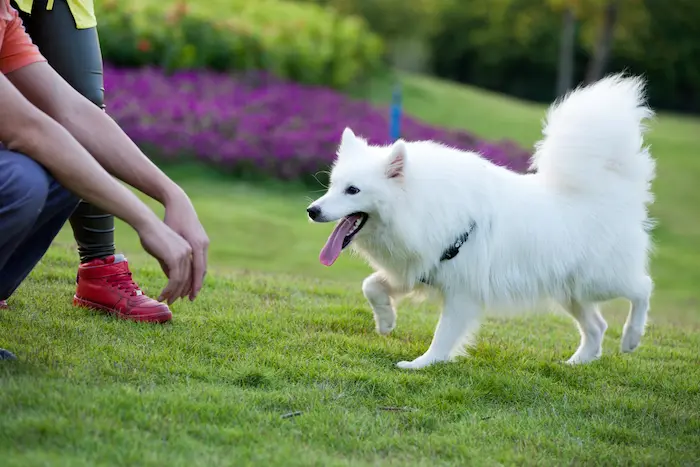
Wireless dog fences are gaining popularity, with pet parents seeking effective solutions for safety.
As spring approaches, the idea of spending more time outside is irresistible — especially for dogs — and springtime safety is paramount. Yard fencing can be a great way to enjoy the warmer weather with your pet. However, installing a traditional fence is a labor-intensive and financially demanding security solution.
An invisible dog fence can be a great alternative to a physical barrier. These virtual GPS fences offer dogs the freedom to roam, explore and play while giving owners peace of mind about safety and security. These can be a great alternative to a costly physical fence. However, these have their drawbacks as well.
Overall, there are three types of dog fencing systems to consider: traditional fences, underground invisible fencing and GPS-based wireless systems. Keep reading to learn more about the benefits of choosing GPS dog fences over invisible fences or traditional fences for keeping your pet contained in your yard – and almost anywhere you take your dog.
Physical Fences vs. Invisible Dog Fences vs. GPS-Based Fences
When considering fencing options, the first step is to compare GPS wireless dog fences to underground fences and traditional fences:
- Traditional fences. Physical wooden, chain-link or metal fences have been the go-to solution for making a backyard dog-proof forever. While they provide a clear boundary, traditional fences are expensive, and installation requires professional assistance or extensive knowledge, expertise and time. What’s more, a physical fence is inflexible, and there’s only so much you can do to make it fit into the aesthetics of your yard so it doesn’t obstruct landscaping or views.
- Invisible Fence® and other underground fences: Wired pet containment systems involve burying wire anywhere from two to six inches underground. The wiring is connected to an indoor transmitter kept inside the home or garage that sends radio signals through the fence. Pets are fitted with a collar that receives the radio signals and alerts the pet if they start to approach the boundary. Should the pet get too close, they receive a correction signal through the collar.
- Halo Collar GPS wireless dog fences. Halo Collar is a cutting-edge wireless dog fence system with a receiver collar and warning feedback system for easy containment. Not only can you create a boundary in your yard, but because there are no underground wires, you can also program the collar for regular walks and dog parks. Having a portable fence is especially useful for stubborn and small dogs. The collar is weatherproof, and you can program unlimited fence configurations into it.
Here’s a quick comparison of the three options:
- Installation. A physical fence takes longer to install, while a wired underground fence takes a bit less time, though it does require digging a trench around the perimeter of the yard. Conversely, you can set up Halo Collar quickly with barely any groundwork.
- Cost. Traditional fencing is usually expensive, with labor costs, materials and ongoing maintenance to consider. Wired underground pet containment systems also require physical labor in the form of digging trenches and laying the wire. Halo Collar is a moderate, one-off expense.
- Flexibility. Wireless dog fences offer impressive flexibility because you can adjust and expand the boundaries and set fence configurations in locations away from home. While underground fences are slightly more flexible than traditional fences, they don’t offer the same level of flexibility as a GPS collar. Halo Collar can fence off your flower beds and other areas of your yard you’d like to protect without creating an eyesore.
- Maintenance. You’ll spend a lot of time repairing and maintaining your physical fence. Wired fences also require upkeep as the wires can get damaged, requiring them to be dug back up for repair. Halo Collar is extremely low-maintenance once it’s set up.
Springtime Benefits of GPS Wireless Dog Fences
As the warmer months arrive, pet owners seek ways of enhancing their environments so their furry friends can enjoy springtime activities. GPS dog fences deliver a range of benefits, including:
- Effortless setup. Setting up your Halo Collar is simple. Without the time spent installing or maintaining a physical fence, you and your dog have more time to enjoy the vibrant spring weather together.
- Portability. Adventures at home are just one piece of the puzzle. With Halo Collar, just charge the collar battery and you’re ready to make anywhere a safe space. Whether you go camping at a favorite local spot, go hiking in a different state or visit loved ones, the portable nature of GPS dog fences means your dog can enjoy the great outdoors with safety always in mind.
- Adaptability. Springtime can bring unpredictable weather; fortunately, Halo Collar is a waterproof collar offering reliable dog containment no matter the environment. If the ground becomes saturated from spring showers or you opt to work on part of your yard with dangerous equipment, you can effortlessly adjust your dog’s Halo Collar to accommodate the need to change boundaries.
- Peace of mind. Halo Collar provides peace of mind so your pet can roam outdoors freely while you focus on yard work, sunbathing or playing with the kids.
Halo Collar 3: The Most Accurate Wireless Dog Fence Technology
Halo Collar 3 harnesses advanced GPS technology to ensure precise pet containment. It uses signals from multiple satellites to provide accurate location tracking and boundary enforcement, all from the convenience of a smartphone app.
What really sets this wireless fence apart is its user-friendly design and customizable features — because we understand that every dog is different. Using the Halo Collar app, you can easily set up virtual boundaries, adjust parameters and monitor your dog’s activity from anywhere. What’s more, it has personalized training options, so you can tailor containment settings based on your dog’s behavior and needs.

Preparing Your Yard for a Wireless Fence
Even though GPS wireless dog fences are easier to set up than traditional fences, there’s still a little planning and preparation involved:
- Selecting a system. Find the system that’s suited to your needs in terms of features, range, portability and compatibility with your dog’s temperament and size.
- Marking the boundary. Hold the Halo Collar in one hand and walk to where you want to establish the boundary, use the app in your other hand to create fence posts. Alternatively, drag and drop fence posts remotely using the app. Keep in mind that the first option offers pinpoint accuracy.
- Testing the signal. Test the signal strength throughout your yard (or wherever you’re setting up the fence) to see if there are any areas of interference.
- Addressing concerns. Be mindful of trees, buildings and metal objects, which can interfere with your wireless signal. Make adjustments as needed.
- Installing the wireless fence. Follow the instructions carefully when setting up your Halo Collar wireless fence. Consider factors such as elevation changes and landscaping features that could affect satellite signals. Finally, be sure to regularly check the system’s settings to ensure your pet’s safety.
Safety and Training Tips
With Halo Collar 3, you can create safe spaces for your dog and enjoy peace of mind that it’s contained and trackable. However, just like any other tool, there’s a learning process — for you and your dog.
Here are some tips for training:
- Invest time in training your dog so it understands where the boundaries are and responds appropriately to warning feedback. Consistency and positive reinforcement are key here.
- Introduce your dog to Halo Collar’s features gradually, allowing it to learn at its own pace. Begin with short sessions and gradually increase exposure to boundaries so your dog doesn’t identify Halo Collar training as something stressful or unpleasant.
- Adjust Halo Collar 3’s settings based on your dog’s unique personality and response to training. Some dogs require higher or lower warning feedback settings based on their size and temperament.
Unlock Spring Freedom With a Halo Collar
Lose yourself in the joys of spring with Halo Collar 3 — your dog’s ticket to freedom and your ticket to peace of mind. Experience the ease of our GPS wireless fence, letting your pet roam safely while you track it from the convenience of a smartphone app. With its easy setup, advanced safety features and portability, it’s a hassle-free, all-encompassing solution to safe canine exploration.
Visit Halo Collar’s website today to learn more and get the perfect wireless collar and dog fence, all in one.






